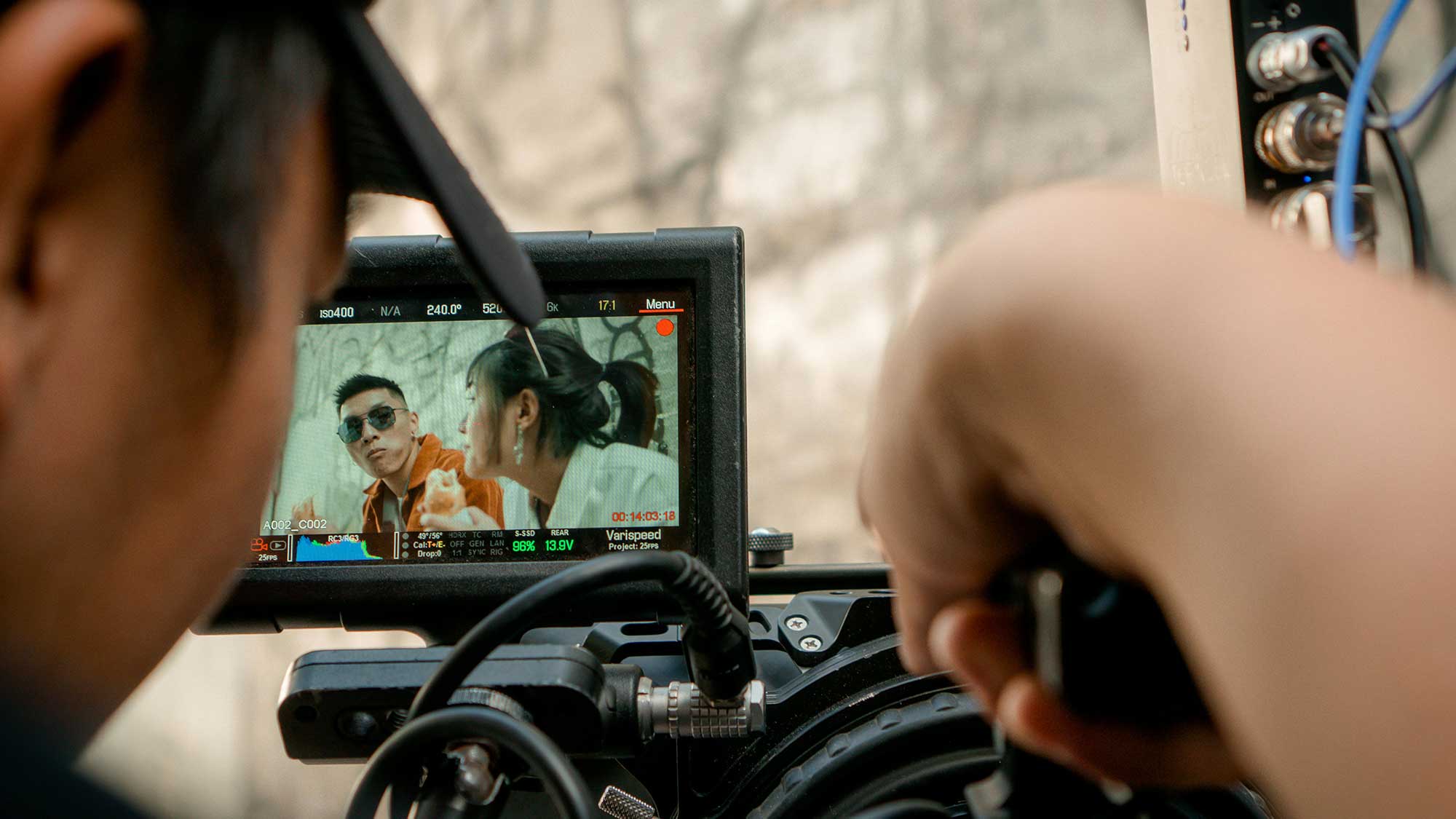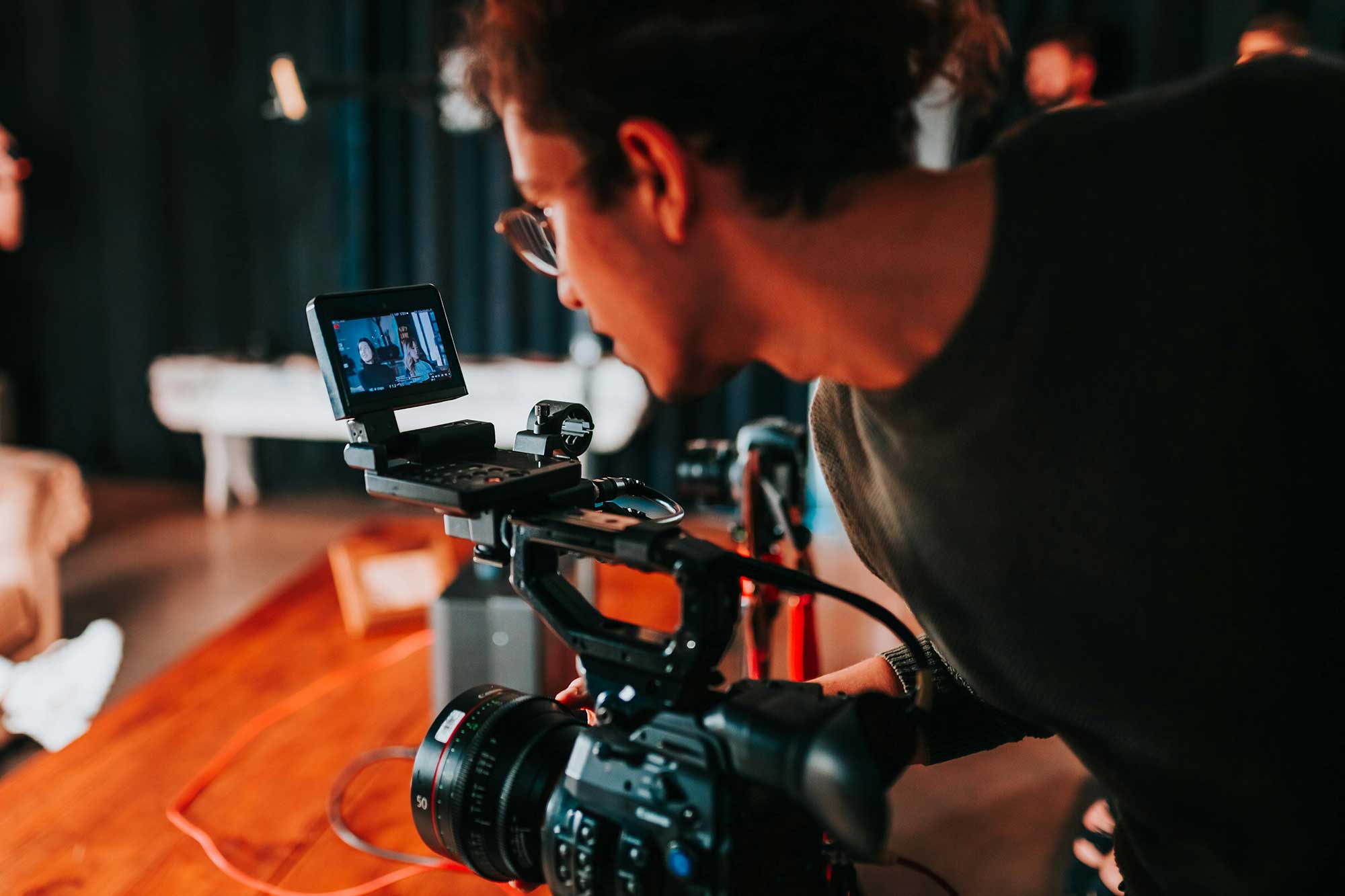The Experiences a Cleveland Business will have Making Videos.

Video is king on the internet. There is no denying that video is more interactive and holds people’s attention more so than other mediums like text, audio, or photos. If you have experience making videos yourself you know there can be so many unseen hardships that plague video producers, even a cloud on a sunny day can halt production for a few minutes on set for a major Hollywood motion picture.
Video production provides extremely versatile content for every post, website, social media app, or whatever digital platform you can think of and it’s not going away anytime soon. Video has become the best way to portray your brand, reach your customer, and to create evergreen content that fits anywhere on the internet. We are going to walk you through the entire process, step by step, and explain the challenges and rewards of approaching this adventure properly.
This list will not only give you a good idea of hiring a video production team from an outside source, but it will also give you an idea of what you will face if you decide to pick up your smartphone and camera and try to do it yourself. We will throw in tips here and there for self-producers, but this article is about the process of hiring and actual company, like Acclaim, to come write, film, edit, and revise a professionally made video.
Video Production from a Birdseye View
A video production company will sit down with you before anything has been set in stone. You will hash out the idea behind the video, what message you want to portray, and logistical things like location, duration, timeline, and need for animations or graphics to be created. After a couple of initial meetings, the first step is writing out the script and storyboard. The producers of the video will create a shot-by-shot organized list of ideas to film and compile. Of course there are circumstances that can’t be planned for. Recently we filmed a kids guitar concert here in Cleveland, and you can’t plan for interviews with kids, they’re kids, and they act like kids.
Video production is collaborative, so the producers will inevitably pick your brain for direction, especially if it is about a niche topic like insurance policies, or plastic-grade manufacturing. It will be important for you to help give them an educated run-down, maybe a short description of the industry or service you work in. As much as we would all like everyone to know exactly what to google, it is often better to send them information curated to your project, it can really help a production team steer the ship in the right direction.
After these initial interactions, and a date has been set to film, expect that company to show up with equipment filling up their cars, vans, trucks, whatever. Make sure you’ve cleaned up the space you want them to film, nobody wants to see a mess in the background. Then, you facilitate them however you can with the filming, and then they pack up and leave. Done, the hardest part is over for you.
Post-production is when the little details of the video get ironed out. You’ll have a myriad of rough drafts passed between you and a litany of revisions will occur. Sometimes a video completely transforms in this stage as bosses/CEOs or anyone with any kind of authority usually brings the hammer down in this stage. Just keep communications open and offer advice where you can, you know your boss better than the video editor we promise.

The Pre-Production Process
Figuring out a concept is the most prominent part of this step; you need to know what kind of video you want to make for your business here in Cleveland. Do you want an overview video to put in front of investors? Do you want a couple short-form vertical videos for TikTok and Instagram? Are you looking for a “How it’s Made” style video for your product? Ask yourself these questions and think about where you want to focus the video production team as each of those are a wildly different day of filming.
Scripting can be important, especially for voiceovers. If this is a video to give a concise mission statement or brand position, you’ll want to come up with a rough draft for an actor to say on camera. It will be modified and rewritten as you go through the process so do not put too much stock into it at the beginning. This will ultimately become the creative brief that everyone producing the video will adhere to. If you’re trying to create shorter videos with a focus on natural interactions you may not need a script, but you’ll want a list of the types of interactions you want to capture. Say you work at a non-profit and you want to capture the stories of the people you help, then make a list of demographics i.e. elderly people, families, addicts, etc.
The video production company will take the script and the outlines and craft a story (if needed) in order to make filming the content much more fluid. This will lead to scheduling dates and times where they can come out with that Honda Civic filled with cameras, lights, and microphones. It can be difficult running a business and setting up a filming date so try your best to communicate if there are dates and times to avoid, busy or quiet parts of the day/week, and locations that will work within those parameters.
This is also the time to secure any permits you may need to film. Generally filming on your own private property is a green light, but if it requires you to film at a public event like a baseball game or a different business altogether just make sure you have expressed permission to film. Most production companies will tackle this, but if you have a list of locations that might need permits make sure you communicate with the team.
The last thing you may need to do as a business owner in this step is prepare whatever needs prepared on your business’ end. Make sure that equipment you’re showing off is operational and clean, double check with any employees who may want to be on camera, make sure you have nothing lined up in your calendar that could take away from the team’s ability to film, and make sure everything is clean and presentable. Did we mention the cleaning? Please make sure the locations are clean, having the production team clean is a huge setback for everyone involved.
This is where your schedule frees up, this was the majority of anything you would have to accomplish.

Production
Wipe the sweat from your brow, now it’s up to the production team to come in and film. They will take the script and storyboard and start filming. The most you will need to do here is make sure they have a safe location to put their equipment. Their team will comb through facilities and record the interviews or actors you lined up and you get to watch how a video is made. If you’re setting up your phone and doing this yourself, just make sure you have someone helping you move stuff or have them be on guard duty to intercept customers and employees who may want to speak to you in the middle of filming.
Make sure your team is informed and have their help if it’s needed. They will probably set up one or two locations as the main scenes where most of the filming will be done, especially if there are multiple lines of speech in the script. Jumping around to too many locations can be distracting (unless the point of the video is to show off those multiple locations). This set up will undoubtedly include lights and cameras on tripods along with a myriad of microphones and props if needed.
The video production team will also need to film something called B-roll. Funny enough, B-roll can oftentimes be much more difficult to film. The people on camera speaking? That’s called A-roll, it comes from the rolls of films used in cameras almost a hundred years ago. B-roll demands diversity, cinematography, and creativity. At Acclaim we usually load up a gimbal with a Sony FX3 and walk around framing interesting shots. B-roll will have the team swarming over a piece of gear almost like a ballet where the cameraman will film zooming into or out of a subject. These shots that are heavily cinematographic are used to create small breaks for the viewer in the video. You know your business better than anyone, let the team know if there is a cool location than could be interesting to film, odds are they will take you up on the offer because having more footage of everything imaginable is better than not having enough.
The last thing to look out for is everyday distractions like customers or loud trucks loading up in the background. Life happens, and we can’t avoid every problematic instance, but if you can help steer people away from the filming or ask that truck driver to lay low for a couple minutes while the team films a speaking part it can be more than lifesaving. After that’s all said and done the production team will pack up and head out. This is the point at which you get to have the most fun.

The Post-Production Process
Your job here is to sit back and relax until you get a phone call or email. This is where the editing comes in.
The production team will take all of those SD cards back to their office, boot up some incredibly beefed-up gaming PC, and start organizing and checking the footage. They’ll only use about 5-10% of what they filmed, and they will start to make sure the clips they have look the best. They’ll upload the acceptable clips into Adobe Premiere or Final Cut Pro and start to chop up the footage, adding effects, cropping in on the speaker, adjusting the color, and a cacophony of other editing tricks that seem like magic. If you’re editing your own video at home on a computer, we recommend Davinci Resolve, or if you’re on a phone try out LumaFusion, both have upsides and downsides, but they will have the features you need for a project like this.
Editing can take a long time. Ask a professional editor if they enjoy editing. Probably not. It’s tedious and meticulous and there are an astronomical number of things that can go awry while editing. If a clip needs to be adjusted because the sun came out a little harsher for a few seconds, the editor has to go in and adjust only that one simple circumstance. Every “Ah, Um, Oh, Hmmm…” needs to be edited, hidden, or presented in a way that seems more natural than it is. Not to bore you with ALL the details, but so much of what you filmed will be edited down it won’t even feel the same as when you were standing on the sales floor with the video production team. Editing is nothing short of magic that just takes a while. Imagine someone conjuring an actual rabbit out of a hat with real-life sorcery and they say, “Yeah, but it’s going to take 3 months to fully make this rabbit.” You might have a lackluster response.
Now, after a while you will get an email from the team. Here it is. That hidden YouTube link you have been waiting for. You start the video and notice the logo they used is the previous one, you accidently sent them the old logo. You stop the video immediately and start to write an email about the change. Then you remember reading this article and you realize you need to grab a pen and paper and watch the entire video and write down your concerns. Yes, watch the whole thing, pause, and start over …and over and over again and take the time to write out what you think should be changed. Then compile all that into a word document and send it back to the production team. Congratulations, you’re in the final steps of your video being done. The filming is over, the editing is nearly complete. Now you can nitpick on showing a specific B-roll clip, removing a voiceover line, and even remembering to send them the updated logo for your business that you messed up in the first place.

Aaaaaaand CUT!
The video production team will adjust and send you an updated video. You notice a few more small changes. They adjust it again. Finally, it happens. You watch it all the way through and there is nothing written down on that paper. Once you get to this point your video may not be perfect, but it is done. Remember not to get too caught up on minor cosmetic changes that only you would notice. Think of being a regular person who walks into your store sometimes, are they really going to notice that Brian wasn’t wearing his nametag in the background of that Facebook video you posted? No.
You made it all the way through. Look at all you’ve done:
- You booked a video production company.
- You helped write a script.
- You secured a filming location.
- You got Cheryl in accounting to give a testimonial.
- You helped move camera equipment.
- And you gave a list of changes to the editors to your liking.
At this point you might as well have “movie director” on your resume.
The next step after you gets the video is to get it posted, and to think of a plan to market that video. If the company you worked with only did video production, they might not do the marketing themselves, but I’m sure they have a few recommendations in mind. You might be lucky and have hired a full-service video marketing agency, like us at Acclaim. We offer the capability of setting up Google and Meta ad campaigns sending people to your website where they are met with that glorious video you helped make lives. Ultimately, marketing the video will help drive traffic to your site and result in more customers. We will go into the specifics of video marketing in another blog, but for now you’ll just have to feel like James Cameron with your movie creation skills and wait for the video marketing insight to come out.
If you ever want to call and talk shop, we here at Acclaim love talking about the video production process and will gladly give you a free consultation on your project.